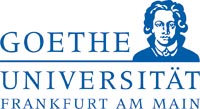

Whether a sick cell dies, divides, or travels through the body is regulated by a sophisticated interplay of signal molecules and receptors on the cell membrane. One of the most important molecular cues in the immune system is Tumour Necrosis Factor α (TNFα).
Now, for the first time, researchers from Goethe University have visualised the molecular organisation of individual TNFα receptor molecules and the binding of TNFα to the cell membrane in cells using optical microscopy.
Before TNFα can bind to a membrane receptor, the TNFR receptor must first be activated. By doing so, the key will only fit the lock under certain circumstances and prevents, among other things, that a healthy cell dies from programmed cell death.
“For TNFR1 in the membrane, the binding of TNFα is mediated through several cysteine-rich domains, or CRDs,” explains Sjoerd van Wijk form the Institute for Experimental Cancer Research in Paediatrics and the Frankfurt Stiftung für Krebskranke Kinder at Goethe University.
In particular, CRD1 of the TNFR1 makes it possible for TNFα to “attach”. Researchers already knew that TNFR1 molecules cluster in a fashion similar to a dance, in which two, three or more partners grasp hands – with the dimers, trimers or oligomers consisting of single TNFR1 mole-cules – in the case of TNFR1. This kind of “structural reorganization” also takes place when there is no TNFα present.
“Despite the significance of TNFα for many diseases, including in-flammation and cancer, the physiology and patterns of TNFR1 in the cell membrane still remain largely unknown up to now,” says Sjoerd Van Wijk, explaining the starting point for his research.
In order to understand the processes in the cell membrane in detail, van Wijk approached Mike Heilemann from the Institute for Physical and Theoretical Chemistry at Goethe University. Using a combination of quantitative microscopy and single-molecule super-resolution microscopy that he developed, Heilemann can visualise individual protein complexes as well as their molecular organisation in cells.
Together with Ivan Dikic (Institute for Biochemistry II) and Simone Fulda (Institute for Experimental Cancer Research in Paediatrics) from Goethe University, Harald Wa-jant from the University Hospital Würzburg and Darius Widera from University Reading/UK, they were able to observe the dance of the TNFα receptors.
Financial support was provided by the Deutsche Forschungsgemeinschaft (DFG) through the Collaborative Research Centre 807 “Transport and Communication across Biological Membranes”.
As the researchers report in the current issue of “Science Signalling”, membrane TNFR1 recep-tors exist as monomers and dimers in the absence of TNFα.
However, as soon as TNFα binds TNFR1, receptor trimers and oligomers are formed in the membrane. The researchers also found indications for mechanisms that determine cell fate independently of TNFα. These findings could be relevant for cancer or and inflammatory diseases such as rheumatoid arthritis. “It clear-ly opens new paths for developing novel therapeutic approaches,” states van Wijk.
Publication:C. Karathanasis, J. Medler, F. Fricke, S. Smith, S. Malkusch, D. Widera, S. Fulda, H. Wajant, S. J. L. van Wijk, I. Dikic, M. Heilemann, Single-molecule imaging reveals the oligomeric state of functional TNF-induced plasma membrane TNFR1 clusters in cells. Sci. Signal. 13, eaax5647 (2020).DOI: 10.1126/scisignal.aax5647
Dr Sjoerd van Wijk, Institute for Experimental Cancer Research in Paediatrics, Niederrad Campus, Tel.: +49 69 67866574, Email: s.wijk@kinderkrebsstiftung-frankfurt.de; Prof Mike Heilemann, Institute for Physical and Theoretical Chemistry, Riedberg Campus, Tel.: +49 69 798 29424, Email: heileman@chemie.uni-frankfurt.de
C. Karathanasis, J. Medler, F. Fricke, S. Smith, S. Malkusch, D. Widera, S. Fulda, H. Wajant, S. J. L. van Wijk, I. Dikic, M. Heilemann, Single-molecule imaging reveals the oligomeric state of func-tional TNF-induced plasma membrane TNFR1 clusters in cells. Sci. Signal. 13, eaax5647 (2020).DOI: 10.1126/scisignal.aax5647












